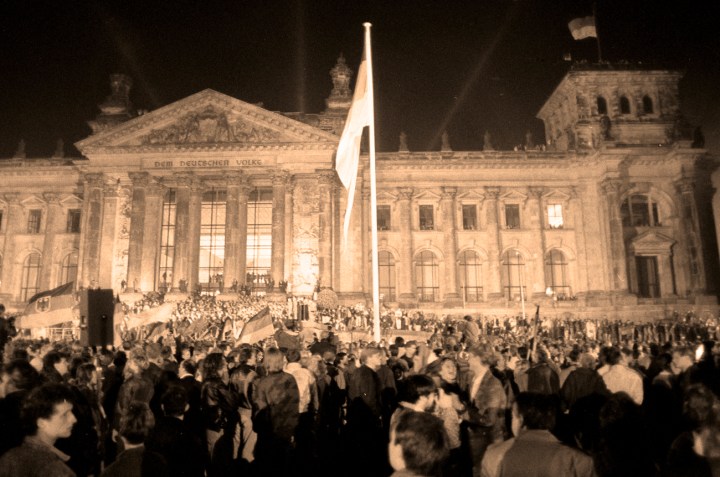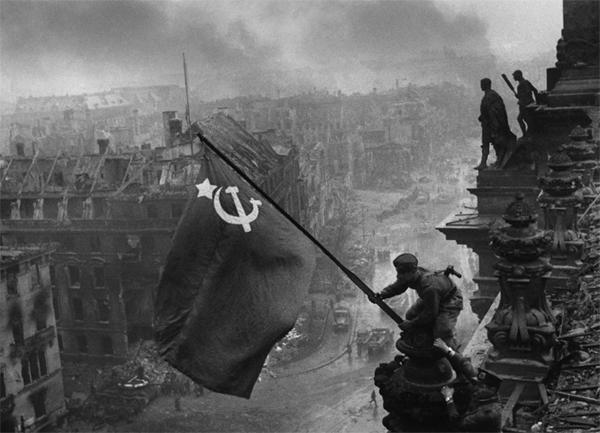World
From our vault: Berlin through time

We first published this article about Berlin's evolution late last year. And, as a unified Berlin celebrated its 25th birthday on 9 November, we think this timeless piece is worth a re-read. By J BROOKS SPECTOR.
Some cities are famous for the things they are made of – think of New York City and recall the Empire State Building, Wall Street, Central Park. Rockefeller Center’s stylish ice rink immediately triggers hopes for urban romance; skyscrapers trigger memories of King Kong; Wall Street triggers images of, well, Gordon Gecko perhaps.
Central Park and Broadway help define romance, sophistication and an urban, urbane lifestyle. From afar, the New York City skyline and the bridges into Manhattan, as in films like “Working Girl,” “On the Waterfront” or “At the Edge of the City,” whisper of aspirations for the good life, of becoming one of the golden people.
London and Paris are culture and urban lifestyle — their iconic cityscapes and public buildings and churches come at us from a dozen angles like a collection of “wish you were here” postcards. Our brain forms a collage of famous paintings, film scenes, musicals and dramas – as well as images from all those novels where London and Paris actually are the main character.
Perhaps the same can also be said of ancient places as Venice, Florence and Istanbul as well. And the idea of Jerusalem is so powerful we are captive to what we believe it represents, whether it is in the form of the Al Aqsa Mosque, the Wailing Wall, the Via Dolorosa or a thousand other spots. The capital city of what P. J. O’Rourke calls “God’s monkey house”, every brick and paving stone cries out for attention.
Our own sometimes-bedraggled Johannesburg can be as vivid. Johannesburg novelists as varied as Ivan Vladislavic, Nadine Gordimer, Phaswane Mpe or Marlene van Niekerk have all tried to cull out the essential texture of this city. British writer Adam Roberts, in the anthology, “From Jo’burg to Jozi”, says of Joeys, “Crest a hill as you drive south from Pretoria, or stare from one of the city’s large parks, and Jo’burg’s towers rise as proudly as Oz above the poppy fields. People follow those tracks and pour to Jozi from all over the continent.”
But what of Berlin – the city that has just celebrated twenty years of liberation from division? What is the idea of Berlin? Until the 19th century, Berlin was certainly not core to the idea of Germany. Vienna, Frankfurt, Dresden, Leipzig, Munich, Cologne, Mainz, those were real cities. The towns of the ancient Hanseatic League were real history. The Rhine, the Saar, the Ruhr, the river towns of Saxony, those were where things of beauty or utility were crafted.
The Prussian kings emulated France and French culture from their lairs in Berlin, importing craftsmen, thinkers, musicians and architects, even giving Voltaire a respite when things grew too hot for him in pre-revolutionary France. Jews, Poles and others from further east migrated to Berlin for opportunity of economic gain. But, when the German Empire was proclaimed in 1871, after the defeat of the French army, the Germans could not bring themselves to return home and proclaim their new empire in Berlin. Instead, they used Versailles’ Hall of Mirrors. That was real culture, the real McCoy, the real deal, a true imperial stage.

Photo: Reichstag Fire, 1933
Perhaps Berlin’s evolution into the iconic begins with World War II. Well, actually, right at the end of the war. As the Red Army captures the city, an unknown Novosti photographer captures a Russian soldier planting the hammer and sickle flag on the roof of the burnt-out Reichstag – one of the most memorable of all wartime photos, rivalling even the American flag photo from Iwo Jima.
Now Berlin is a fallen city; at the feet of the victors, divided into US, British, French and Soviet zones of occupation. Memories of Christopher Isherwood, Sally Bowles, George Groz, Kurt Weill, and the rest of an exciting, in-your-face, hothouse Weimar culture, are momentarily forgotten. Albert Speer’s plan to rebuild Berlin as a gargantuan monument to Nazi power is never carried out.

Photo: Soviets take over, May 1945
Then comes the 1948-49 Berlin blockade and airlift. Yet another photo helps transform the idea of Berlin from that of the ruined capital of a mad dictator to the easternmost outpost of the west. The silver-coloured C-54 plane flies low over the rubble on its approach to Tempelhof Airport with food, fuel and supplies; men, women and children perch on top of a heap of rubble. The innocents are looking up at help on the way.
By 1963, Berlin has been divided by its infamous wall for two years. People tunnel under it, leap from the upper floors of buildings to fall beyond it, drive through the barricades in bulldozers to get past it. A youthful American president, John Kennedy, stands on a platform placed before the Rathaus Schoneberg, the city hall in June, a hundred thousand Berliners standing before him.
Watch: JFK’s speech, June 1963
In the full view of television cameras sending his buoyant image around the world, Kennedy says, “Two thousand years ago the proudest boast was civis Romanus sum — I am a Roman citizen. Today, in the world of freedom, the proudest boast is ‘Ich bin ein Berliner’… All free men, wherever they may live, are citizens of Berlin, and, therefore, as a free man, I take pride in the words ‘Ich bin ein Berliner!’ ” The crowd explodes into applause and a speech to Berliners becomes a new perfect international political trope, antonym to the gloomy twilight of le Carre’s “The Spy Who Came in From the Cold.”

Photo: JFK’s hand-scribbled note, ‘Ich bin ein Berliner!’
A quarter of a century later, in 1987, another president, this time, Ronald Reagan, has come to punch his ticket with a speech in the still-divided city. As he sees it, his task is not to rally Berliners with a “hold on, the cavalry is coming.” No, he is the cavalry! In front of the two hundred year old Brandenburg Gate, Reagan thunders: “Mr. Gorbachev, open this gate. Mr. Gorbachev, tear down this wall!…This wall will fall. Beliefs become reality…. The wall cannot withstand freedom.” And the transformation is complete. Berlin now stands, not for defeat, nor for the long twilight struggle against despotism, but for the idea of freedom.
Watch: Ronald Reagan’s ‘Mr. Gorbachev, tear down this wall!’ speech, 1987
And, at least if you are Ronald Reagan, the inevitable will happen, no question about it. If, two and a half years later, Reagan’s inevitable does happen, it won’t really matter if it comes from a considered decision by a Russian premier or if it is an instinctive decision by East German Border Guard Harald Jaeger who, when he opens the gate, he knows East Germany is finished, he knows the crowds will sweep through the open barrier, will tear down this hated symbol and that they will announce they have made history. And Berlin is remade as an ordinary city again.
Nineteen years later, another charismatic young American political leader travelled to Berlin — and through his speech in Berlin he has actually come to speak to the world of a new America. Treated akin to a rock star, Obama has not even become his party’s candidate, let alone elected president, but his slender figure and the tantalising possibility of fresh ideas attracts hundreds of thousands for his speech. They fill the Strasse des 17 Juni, the broad avenue that connects the Brandenburg Gate with the gold-topped Victory column of the Siegessäule, and beyond. Better than a rock concert. Berlin has now become the way an American political figure shows his international political chops.
Watch: Barack Obama’s 2008 speech
Obama reaches rhetorically back to Berlin’s two finest hours — the airlift and the fall of the wall. He speaks of Berliners’ indomitable resilience of the airlift when the Soviet Union tried “to extinguish the last flame of freedom in Berlin” — and when the fall of the wall opened the “doors of democracy” all over the world.
But Berliners save their most vociferous applause when Obama offers himself as the antidote for everything Germans, Europeans, indeed much of the world, have most disliked about the Bush era. Obama promises, “No one nation, no matter how large or how powerful, can defeat such challenges alone,” the world needs “allies who will listen to each other, who will learn from each other who will, above all, trust each other” and, finally, “this is the moment to secure the peace of the world without nuclear weapons.” And this is the hope that helps animate Obama’s Nobel Peace Prize just a year later.
Berlin has been allowed to come together as a single, unified city for two decades. An architecturally stunning, renovated Reichstag, a controversial but arresting Holocaust memorial, great boulevards such as the Unter den Linden and Kurfürstendamm are again glittering roadways and shopping zones. The city’s galleries, studios, clubs and concert halls are, at the least, the equal to those of any other world city. Berlin can stake its claim, increasingly, to be Europe’s capital – and the further east the European Union and NATO stretch out to embrace new members, the more logical Berlin’s claim as the continent’s capital becomes. Much has been gained from this evolution, but Berlin has lost one thing: it is no longer the physical embodiment of the sharp demarcation between two very different views of the world. DM
Main photo: A file picture shows thousands of people as they celebrate the reunification of East and West Germany in front of the Reichstag’s building in Berlin, October 3, 1990. Germany on October 3, 2010 will mark the 20th anniversary of the unification of the two German states and re-establishment of federal states on the territory of the former GDR. Picture taken October 3, 1990. REUTERS/Fabrizio Bensch


















 Become an Insider
Become an Insider